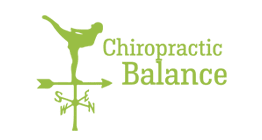On your first visit with us we assess your posture and as part of that analysis we look at your spinal curves. We do this by looking at you from the side. Everyone's spine should curve in two directions: towards the front and towards the back. When the spine curves towards the front of the body (e.g. the thoracic spine and sacrum), we call them kyphotic curves. When the spine curves towards the back of the body (e.g. the cervical spine and lumbar spine), we call them lordotic curves.
We all start off in life with the two kyphotic curves (these are called primary curves). These primary curves are the direct result of spending time in the foetal position while in the womb, and so when we're born our spine looks like one big 'C'.
Then as life goes on we develop two lordotic curves (these are called secondary curves). The secondary curves are a bit trickier. We develop these as a way we use our bodies. We start developing these as a baby a few months after being born when we develop the neck strength to lift our heads and look around us. This is important because we're learning how to visually assess our environment, and from there we move on to reaching, grasping and crawling. This is why tummy time as a baby is so critical - it's the perfect way of developing our cervical curve! Similarly, our lumbar spine begins to develop as we start to stand and learn to walk. As the pelvis rotates to allow the feet to touch the ground, the lumbar spine curves to accommodate the new movement pattern. Once our secondary lordotic curves become more developed, our spine starts looking more like an 'S'. This continues to be developed until we're about 8-10 years old.
Why are these spinal curves important? Because they contribute to functional stability, strength, balance and flexibility. This is important because we put our spine through a lot of bending, twisting, weight-bearing and shock-absorbing activities throughout each day, such as sitting, walking, running, lifting etc. When our spine has an appropriate balance between primary and secondary curves, we function better and adapt to the stress of life better. If our spine was too straight, all the stress would go directly through the bones, leading to a lot more wear and tear of the weight-bearing parts of our vertebrae and intervertebral discs. If our spine was too curved, more stress would be placed on the muscles in the region to maintain posture and absorb shock, resulting in chronically tight and weakened muscles. Either way, we'd have a much more prone to injury with most activities.
One danger regarding our spinal curves for us is the loss or overdevelopment of our secondary lordotic curves - our cervical (neck) and lumbar (low back) curves. These can be progressively changed by poor posture, lack of stretching and ageing. Our cervical curve for example typically loses its curve from all the sitting, computer work and looking down at our mobile phones that we do.
This is why we keep reminding you about having a nice balanced posture and stretching lots. In case you've forgotten to do your daily neck exercises, here they are below!
Regular neck exercises will help you to not only maintain a healthy neck curve, but also aid in reducing neck pain and headaches and increasing neck motion.


